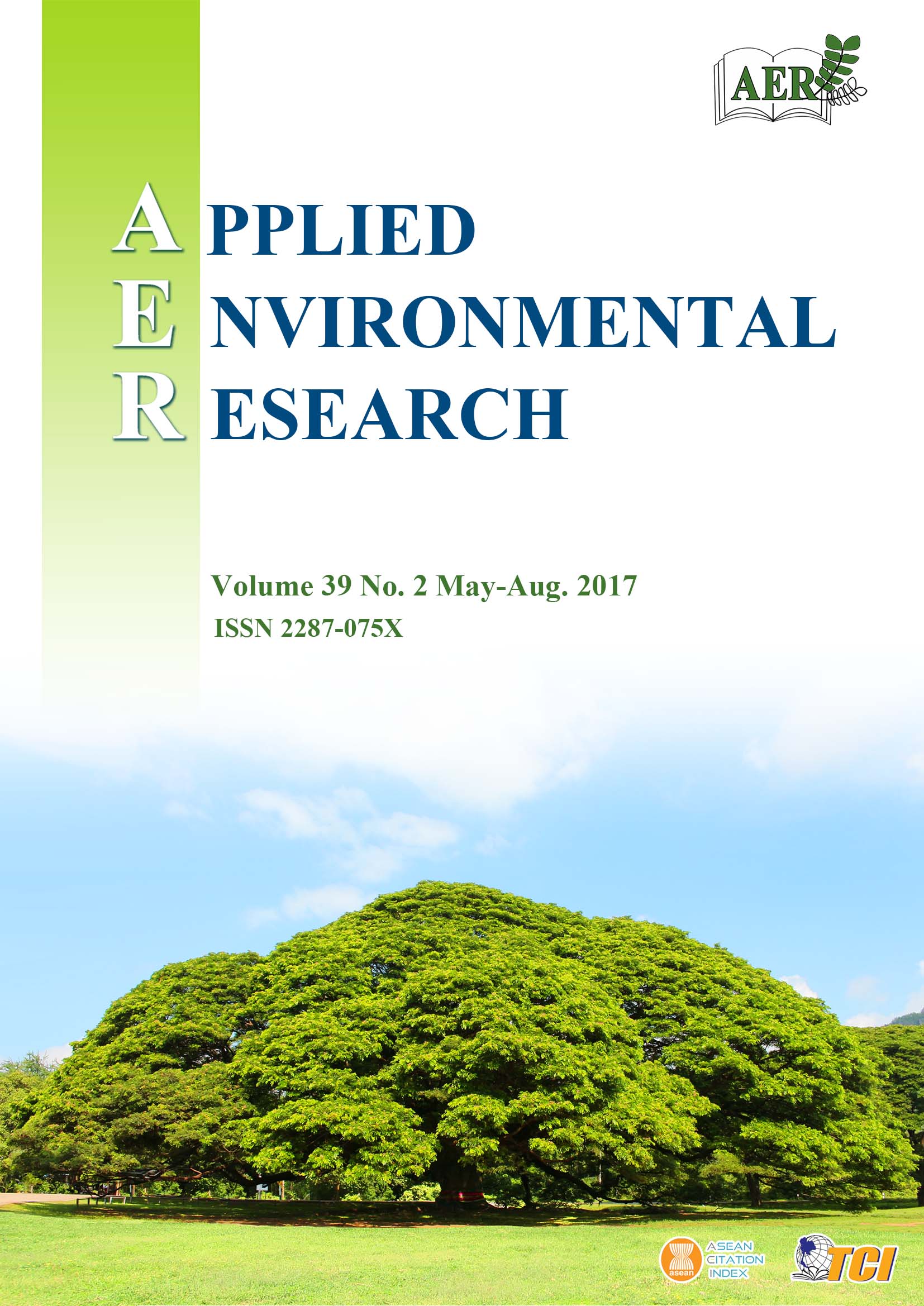Mineralogical and Chemical Characteristics of Gossan Waste Rocks from a Gold Mine in Northeastern Thailand
Main Article Content
Abstract
The mineralogical and chemical compositions of various ocher gossans from a gold mine in northeastern Thailand were investigated, including some heavy metals and other toxic elements. Mineralogical characteristics were carried out using X-Ray Diffractometer (XRD) and Scanning Electron Microscope (SEM) whereas chemical compositions were analyzed using Electron Probe Micro-Analyzer (EPMA). These ocher gossans can be classified, initially based on Munsell color, into five types: type-I (pale-yellow color), type-II (brownish-yellow color), type-III (yellowish-brown color), type-IV (dusky-red color) and type-V (red color). The primary silicate minerals (i.e., quartz, garnet epidote and amphibole) are found in type -I, -II, -III and -IV. They appear to be composed of skarn rock. On the other hand, the secondary minerals (i.e., goethite, jarosite, ankerite, montmorillonite, magnetite, gypsum and secondary quartz) are observed in types-II, -III, -IV and -V. As and Cu are found crucially in types-III, -IV and -V in which both elements can be adsorbed by goethite and/or jarosite. As the result, the gossan rocks in this area are natural adsorbents with high potential to reduce As and Cu contamination into the ecosystem. Therefore, the gossan, a natural attenuation material, is recommended for site remediation because of its low cost and local abundance. Feasibility studies should be conducted to further investigate the potential.
Article Details

This work is licensed under a Creative Commons Attribution-NonCommercial 4.0 International License.
Published articles are under the copyright of the Applied Environmental Research effective when the article is accepted for publication thus granting Applied Environmental Research all rights for the work so that both parties may be protected from the consequences of unauthorized use. Partially or totally publication of an article elsewhere is possible only after the consent from the editors.

